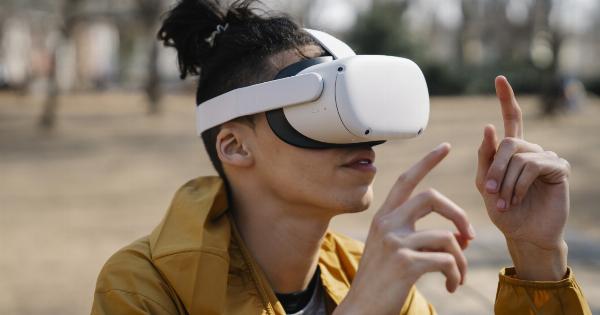Spatial images have always been a point of fascination for human beings. From the earliest cave paintings that depicted animals in motion, to modern-day movies that transport us to new worlds, spatial images have captured our imagination.
But where do these images come from? How are they created? And what is the impact of spatial images on our lives?.
The Origins of Spatial Images
The origins of spatial images can be traced back to the earliest days of human civilization. The ancient Greeks believed that the world was made up of four elements: earth, air, fire, and water.
These elements were thought to be the building blocks of all matter, and they were often depicted in works of art and literature.
Fast forward a few thousand years, and we find the first attempts to create spatial images using technology. In the early 1800s, a Frenchman named Joseph Plateau invented a device called the phenakistoscope.
This device consisted of a spinning disk with images painted on it, and when viewed through a special lens, it created the illusion of motion.
Over the years, technology continued to evolve, and with it, the art of creating spatial images.
From the earliest forms of photography to the modern-day wonders of CGI, the tools available to us have continued to push the boundaries of what is possible.
The Destinations of Spatial Images
So where do we find spatial images in our daily lives? The answer is everywhere. From the movies we watch to the billboards we pass on the highway, spatial images are a ubiquitous part of modern society.
One of the most popular destinations for spatial images is in video games.
With the rapid advancement of technology, video games have become an incredibly immersive experience, transporting players to entirely new worlds and giving them the ability to interact with those worlds in ways that were once only possible in our imaginations.
Spatial images can also be found in advertising. Advertisers have long known that spatial images can be incredibly effective in grabbing our attention and creating an emotional response.
Whether it’s a beautiful sunset in a car commercial or a mouth-watering burger in a fast-food ad, spatial images can be the difference between a successful campaign and a flop.
The Impact of Spatial Images on Our Lives
So what impact do spatial images have on our lives? The answer is complicated and multifaceted.
On the one hand, spatial images can be incredibly inspiring. They have the power to transport us to new worlds, to show us things we never thought possible, and to inspire us to dream big and be creative in our own lives.
On the other hand, spatial images can also be incredibly manipulative.
Advertisers have long known that the right image can trigger an emotional response in us, and they often use this knowledge to try and persuade us to buy their products or support their political agendas.
Overall, however, the impact of spatial images on our lives is largely positive. They inspire us, entertain us, and help us to see the world in new and exciting ways.
The Future of Spatial Images
As we continue to push the boundaries of technology, the future of spatial images looks brighter than ever before. From virtual and augmented reality to holographic displays, the tools available to us are constantly evolving and improving.
As a result, we can expect to see even more immersive and interactive spatial images in the years to come.
Whether it’s exploring new worlds in a virtual reality headset or creating stunning works of art using the latest CGI software, the possibilities are endless.
Conclusion
Spatial images have been a part of human civilization for thousands of years, and they continue to capture our imaginations and inspire us to dream big.
From the earliest cave paintings to the most advanced virtual reality experiences, spatial images are a constant reminder of our boundless creativity and imagination.


























